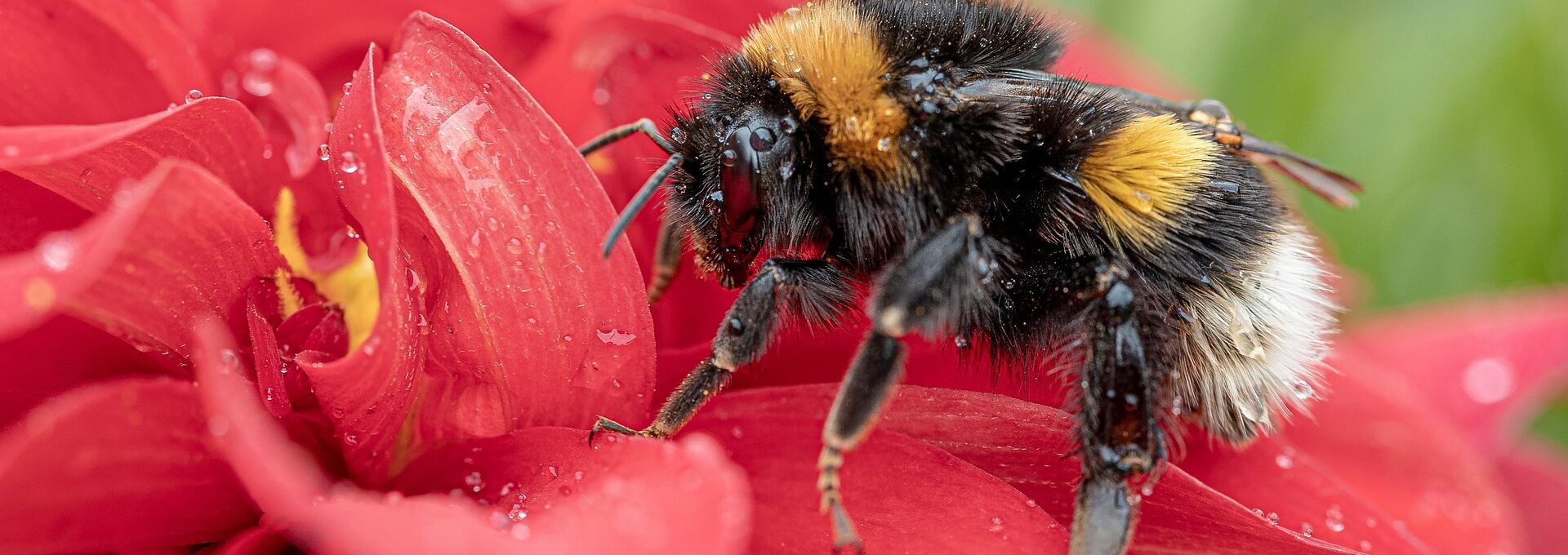
Hi, this is Jane from the Wild Bunch with our latest column.
We may think we can easily identify a honey bee and a bumble bee. Yet, not only are there 250 species of bees in the UK, but there are also many bee-mimics. Most of these are hoverflies, do not sting, but have evolved to look like a bee at first glance to avoid predation by birds. It can be hard to tell bees from bee-mimics, although if they settle for a moment then the difference can easily be spotted. A bee has two pairs of wings that rest close to its body, whilst a bee-mimic has one pair and rests them away from its body.
In addition to the honey bee, we have 24 species of bumble bee in the UK which are social and nest in colonies. Some nest below ground, in old rodent holes or gaps at the foot of a wall. To encourage bumble bees you might build a little nest-place near the edge of your garden. All that is needed is a short length of hosepipe, bent into a U shape and buried in the ground with each end just above the surface. Then upturn a flowerpot, with a little dry nesting material inside, over one end of the hosepipe and cover the pot with a slate to keep rain out.
In addition to honey and bumble bees, there are also solitary mason bees and mining bees that nest in cavities including bee hotels. Mason bees can often be seen buzzing around the surface of a wall looking for nesting holes, whilst mining bees nest in the ground – you may spot little holes in grassy areas, with a small pile of excavated earth next to it.
Regardless of whether they are bees or bee-mimics, all play a vital role as pollinators, as well as being an essential part of the food chain. Numbers have declined drastically with loss of habitat, so we can help by keeping our gardens and open spaces full of plants rich in the nectar and pollen they need – such as bramble, buddleia, pussy willow and apple blossom, plus thistles, comfrey, pulmonaria and scabious. And don’t forget the humble dandelion.
Join the Wild Bunch to find out more about supporting nature in our gardens and open spaces, or come along to our next session on Thursday 16th March which focusses on plants for pollinators – we will be looking at pollinating bugs and what they like to eat, where to grow and what to plant – including how to store and use the seeds for next year – details can be found on the Wild Bunch page.

